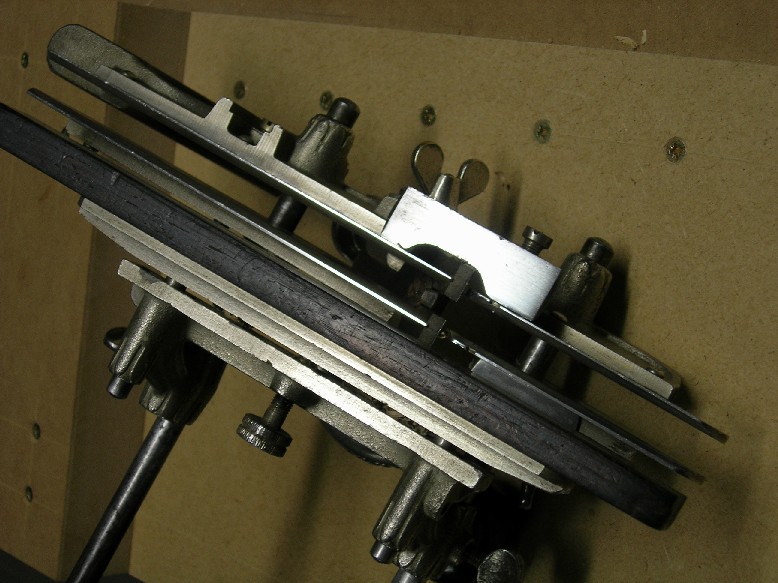Hi,
My first attempts at T&G was with a stanley 45. Advice given already seems to cover everything.....I don't know if this will help.
Some pictures in it at least on T&G with my 45.
http://www.woodworkforums.ubeaut.com.au ... hp?t=29848
You may find an easier way of doing it.
Its particularily important that the fence and skates are parallel, like MarcW said, I think. Even though the fence seems to run parallel on its rods, there's often too much play. With a long combination plane like the 45 it doesn't take much skew of the fence to cause a binding problem....I'd check fore and aft of blade with calipers to ensure the fence is the same distance from the skate throughout.
I agree that waxing definetly helps. Slippery wax is best I reakon. But each to their own. I've found sometimes if I use dry wax it can actually bog down the plane....some kind of bogged down suction sort of thing going on.....or maybe I just put too much on.

I believe also, you'll find, the plane easier to control with a deeper wooden face, which you can take advantage of in Tongue and grooving cause the timbers clamped on its edge....ie. deeper wooden face of fence on wide portion of timber = ideal stability. You've got more leaverage to ensure the plane stays tight to the timber and stays vertical.
Another thing I just thought of. I have a sargent version of a stanley 45. I don't know its official name but I assume its the same one as yours.
The one I have has casting flaws. Unlike the stanley 45's the skates in my sargent are cast steel. The sliding skate part has a big wind in it, making the thing unusuable. So, if I was you I'd check that the skates are straight with a ruler......If the skates have even a little wind in them, the plane may bog down in the similar way as having the fence set out of parallel.
Also ensure that the blades corners protrude out the side of the skate. Flush is often not good enough. More bogged down planing.....
Some things to consider. I have to go.....baby's crying.
Goodluck.








